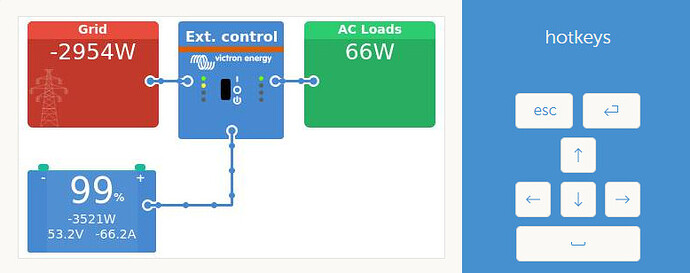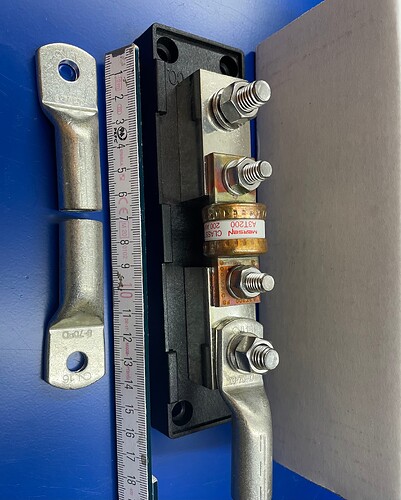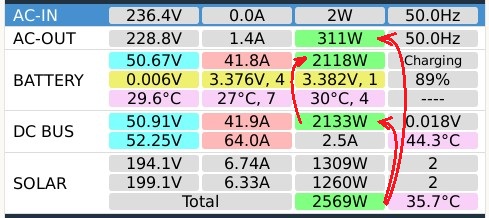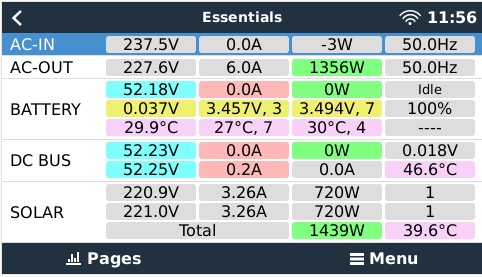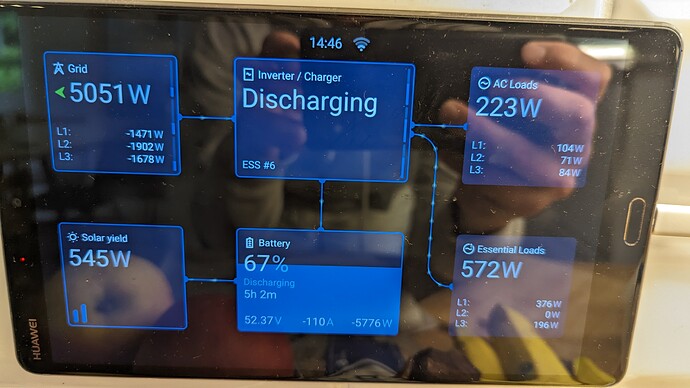Most modern appliances that take an ac power source in both the 110Vac as the 230Vac range would most likely run on DC from a little above 80V and up. Unless and until they don’t of course ![]() . Anything with a motor and or transformers running directly from the power source an obvious exception.
. Anything with a motor and or transformers running directly from the power source an obvious exception.
I wonder why there are no energy efficiency labels, like on basically every other electronics device on the planet - from a simple light bulb to every kitchen appliance - yet inverters…errr. Nope.
Also. It would be nice, and a whole lot more transparent, when inverters also had some sort of efficiency graph. Next to that efficiency label. Odd that there is no (Eu) law for it. At least not to my knowledge.
I agree with the idea that it would be valuable to have better access to efficiency specifications. I’m a whole lot less enthusiastic for more government regulations to make that happen where the market already has a direct incentive to do so itself.
2 of those rectifying diodes are going to have to work twice as hard though, but it’s probably ok, even desired, if they break down into a short, increasing efficiency.
Like I said, lowering the grid set point does wonders to efficiency. In my experience the charging efficiency is lower than the discharge efficiency, so do another test when exporting at ~3800W power and see if you get satisfactory efficiency.
With regards to discharge from battery and efficiency, use a node red flow to keep the battery discharge at a constant current (not wattage based or other) so the flow varies the discharge watts based on battery voltage.
I have a system (multillus 2) at 96% efficiency doing this on a test bench for much of the discharge testing and do the same for charging.
I have noticed though that 15s sucks for efficiency (so pylons) and so does lower battery voltages on the 16s batteries and some other chemistry batteries. (Not referring to lead based)
As a further note some batteries/bms makes are terrible in their own right efficiency wise.
From just now, so not much improvement. 80-85%. If you have better results I must be doing something wrong, or my specific MP2 is faulty. It’s also weird that it thinks there are AC loads when nothing is connected, it doesn’t do that on charge.
Could you post a screendump of your MP2 discharge, just for my sanity?
Yeah, it might be the battery lying, I received a smartshunt today but still waiting on the lugs to install it. Also got me some 125A fuses as they were cheaper than the fire extinguishers @Diessel ![]()
You can set in the GX no loads on the AC output in system set up or ess i forget which. That will help as well.
The system ac out load may just be the inverter load
[Edited: its done in the ess menu]
Hopefully you went for something beefy!
Here are some DIN 46235 (needs 3 crimps) and a real fuse(holder). Not the usual cheap copy’s from far away ![]()
And yeah some people use huge breaker like styled switches. Expecting them to trip in case of a short. Which they won’t.
No offense, but initially said it trying to suggest that it’s not that bad and some people still buy it, later became interesting having in mind as a device for a test system, but now I am seeing that here in my country, on the second hand market, you can find it much cheaper.
So sorry, not interested anymore… Hope without hard feelings… ![]()
But the comment on MP2 (low freq topology) vs. RS6000 (high freq topology) is true.
Here is something to digest regarding efficiency… Over 95%, at about 40% capacity.
Here during charging (95% efficiency):
And here after done charging and powering up an inductive load (A/C compressor) (94% efficiency)
By the way, look how nicely can be balanced identical MPPTs (identical strings) on the Multi RS when in limited current mode.
Problem raised here, no comment and left as it is by Victron, but later corrected by myself with a small modification on the Multi RS firmware.
Not just beefy, MEGA, well that’s how Victron markets their fuse holders. Btw you should consider connecting that other end of your fuse. jk
Haha🙌 It’s a spare part. I have all sorts of them. And not just fuse(holders). All parts that I use.
Are you referring to USOL type breakers?
So are you saying that they are not working even if they are for DC and properly current sized?
What are you recommending then for quick disconnection (and protection)?
For example connecting the inverter to the main busbar, inverter that could draw 100-120A in normal situations, but to disconnect it if the inverter fails in a short-circuited way?
To be honest I believe that you are right and if that happens, at 20kA and more a 20kW battery could surge, for sure the PCB traces and the internals of the inverter will blow up first, way before the EM trigger inside USOL CB will even twitch. ![]()
Strange, my Multiplus-II 3000VAs are much more efficient than that.
5846/6321=92,5%
Edit: fixed numbers
You somehow mixed the numbers…
From the picture I would assume your Input is 545W from the solar + the 5776W from the battery.
So far we are aligend, but then the output is 5051W to the grid + 223W from the AC Loads + 572W Essential Loads.
This makes in sum 5051W+223W+572W / 545W+5776W => 5846/6321 = 92,48%
Funny is, that you also get the same result ![]()
Haha, I meant 5846/6321 ![]()
I got the lugs from amazon, so probably ‘cheap copies’. But are you suggesting they’ll heat up more? I’ll check with my IR camera when I get the chance… Also do you think it’s worth it to pump some solder in there to improve contact area? Never crimped battery cables before, first time for everything I guess. Using 4 AWG for my max 150Ah battery as recommended by the battery manufacturer.
Oh certainly. Pushing many amps through them will heat the cheap ones up. DIN 46235 lugs are specifically made for these kind of conditions.
Listen. Quality does not mean being a lot more expensive. Just pay a visit at the Cedel website and get some of the Cimco lugs. Want Klauke? Visit elektramat. You’ll regret the choice of lower quality. Eventually. Remember. You’re here due to the apparent inefficiency, so please do not add anything yourself.
Solder? Please don’t. Only people who don’t know what they are doing will do that. No pun intended. We’re here to offer free help.
Hi Alex,
You’ve probably seen those big plastic monsters. Made as PV disconnects. But there are some that work, but not for the price ali something sells them. In short. Real good DC breakers are pretty expensive. You better use T-class fuses anyway.
Also. Fuses in general are used to protect the wires, but you should derate them when your battery pack can’t handle the amps - your battery wiring can be oversized due to length and thermal constrains.
